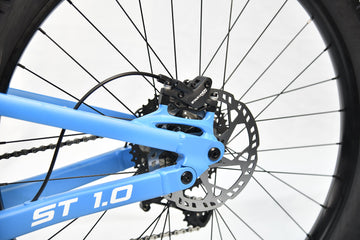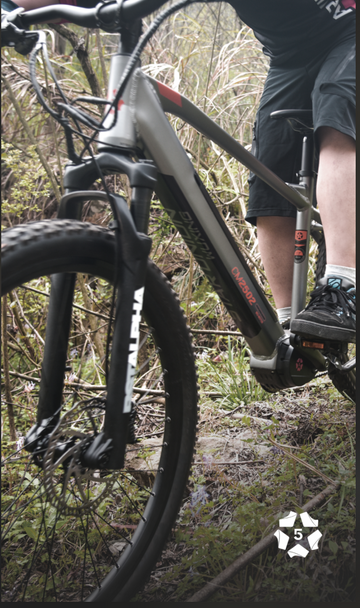
Hydraulic disc brakes offer powerful stopping performance, consistent braking feel, and low maintenance, making them a popular choice for mountain bikes (MTBs), road bikes, and e-bikes. However, to ensure long-lasting performance and rider safety, regular maintenance is essential. Here are some key maintenance tips to keep your hydraulic braking system in top shape.
1. Regularly Check Brake Fluid
The brake fluid in hydraulic systems is responsible for transferring braking force. If the brakes feel soft or weak, it may indicate air in the system or deteriorated brake fluid.
✅ How to check brake fluid?
· If the brake lever feels spongy, it may be time to bleed or replace the fluid.
· Check for leaks along the brake hose—fluid loss can lead to reduced braking power.
· Always use the correct brake fluid type (mineral oil or DOT fluid) specified by the manufacturer.
2. Keep Brake Rotors and Pads Clean
Dirt, oil, and grime can accumulate on the brake rotors and pads, reducing braking efficiency and causing squeaky brakes.
✅ How to clean rotors and pads?
· Wipe rotors with isopropyl alcohol or brake cleaner—avoid greasy cleaners.
· Use fine sandpaper (2000-grit) to remove stubborn contaminants.
· Replace worn-out brake pads to maintain optimal braking power.
3. Inspect Brake Hoses for Leaks
Brake hoses carry hydraulic fluid, so any leak, crack, or blockage can compromise braking performance.
✅ How to inspect brake hoses?
· Look for visible cracks, bulges, or fluid leaks.
· If braking feels uneven, the system might need bleeding.
· Avoid bending or twisting hoses excessively.
4. Adjust Brake Lever Reach for Better Control
Different riders have different preferences when it comes to brake feel. Most hydraulic disc brake systems allow you to adjust the lever reach to achieve optimal comfort and control.
✅ How to adjust brake levers?
· Many hydraulic brake systems come with a reach adjustment screw that allows you to fine-tune the lever’s position.
· Some high-end models offer free stroke adjustment, enabling further customization.
· A lever reach that is too long can delay braking response, so adjust it to a comfortable and effective position.
5. Monitor Brake Pad Wear and Replace When Necessary
Brake pads are wear-and-tear components, and over time, they will thin out, reducing braking efficiency.
✅ How to tell if brake pads need replacing?
· If the brake pad thickness is less than 1.5mm, it’s time for a replacement.
· If you hear a metallic grinding noise, the pads might be completely worn down, requiring immediate replacement.
· Regularly inspect the brake pads to prevent braking failure and ensure safety.
With regular fluid checks, rotor cleaning, brake pad replacements, and proper brake hose inspection, your hydraulic disc brakes will provide consistent performance and enhanced safety. Whether you ride an MTB, road bike, or e-bike, proper maintenance ensures a longer lifespan and safer riding experience!




